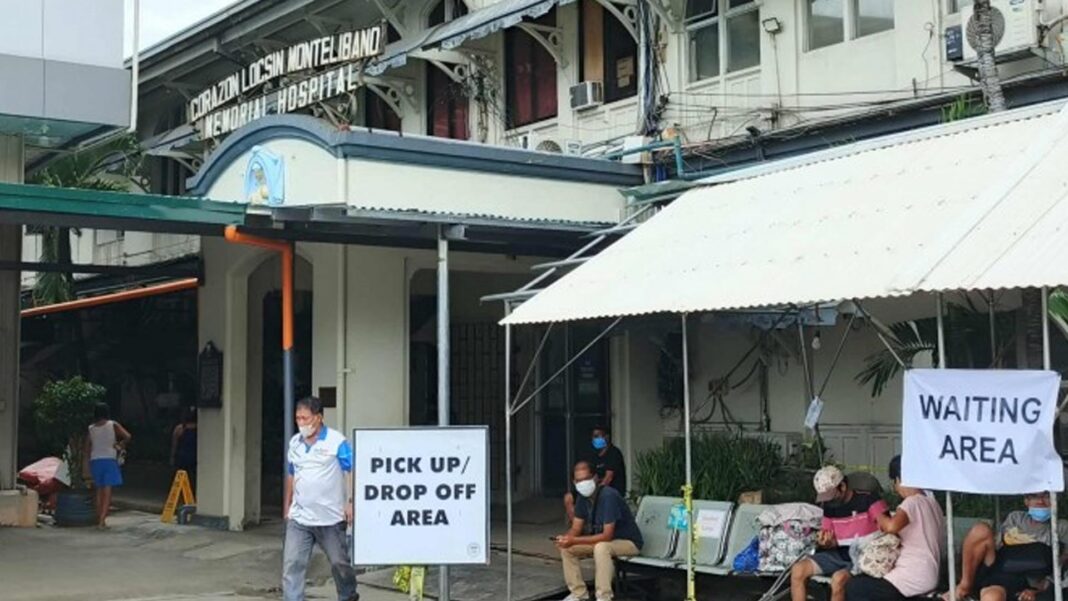The Corazon Locsin Montelibano Memorial Regional Hospital (CLMMRH) has tapped the private hospitals here to assist patients during the three-month closure and renovation of its emergency room (ER) services starting Sept. 28.
In a press conference Wednesday afternoon, CLMMRH medical center chief Dr. Joan Cerrada said they aim to improve and optimize space management in the Emergency Department.
“We need to enhance physical set-up for better patient and personnel experience, and we hope to improve our work efficiency with all of these measures,” she said.
CLMMRH, the Department of Health (DOH) apex hospital in Negros Island Region, issued the notice to proceed for the almost PHP92-million renovation project to contractor Durabuild Construction on Sept. 12.
“The duration would be three months. If it would come to a maximum of four months, the fourth month would just be for the exteriors. We can already use the ER for services at the end of the third month,” Cerrada said.
She said a pilot run of the patient flow process will begin on Sept. 20, with weekly feedback sessions to identify and resolve gaps.
On Wednesday morning, the CLMMRH entered into separate memorandums of agreement with all the six private hospitals in the city to formalize the collaboration.
These include the Dr. Pablo O. Torre Memorial Hospital (Riverside Medical Center, Inc.); The Doctor’s Hospital; Bacolod Adventist Medical Center; South Bacolod General Hospital and Medical Center; Bacolod Queen of Mercy Hospital; and Metro Bacolod Hospital and Medical Center.
CLMMRH finance service chief Shareen Caelian said the partnership underscores a shared commitment to ensuring an uninterrupted emergency care for the community while the regional hospital’s Emergency Department undergoes a much-needed renovation.
“The partnership with private hospitals will be vital in navigating emergency room patients, particularly those requiring prioritized care through coordinated efforts and the shared use of resources. We aim to optimize patient care and ensure that critical cases are swiftly and appropriately managed,” she said.
For the duration of the renovation, the CLMMRH will establish a temporary ER with 18 beds at the Outpatient Department waiting area.
There will also be four to five holding areas at the Mother and Child Building, which has 45 to 50 beds.
Patient prioritization will follow the Canadian Triage and Acuity Scale, wherein categories I to II and trauma cases will be prioritized, and other patients may be navigated to partner private hospitals depending on bed availability.
A similar process will also be set for walk-in patients with critical cases, with trauma cases to be admitted immediately, if beds are available.
Stable cases will be redirected to partner private hospitals when capacity is exceeded.
Patients referred from community health centers, private hospitals, or emergency medical service will be managed through the CLMMRH Operations Center.
Cerrada said the CLMMRH Integrated Hospital Operations Monitoring System has developed a bed tracker system called ER Consortium Monitoring System that will be used to match patients to available beds in CLMMRH or private hospitals.
“Patients initially catered at the emergency department of private hospitals may be transferred back to CLMMRH for admission once stabilized and as soon as beds become available,” she said.
Under the set-up, the CLMMRH will cover costs of emergency services for patients referred through the coordinated system.
“However, subsequent admissions in private hospitals will not be covered by CLMMRH. PhilHealth benefits will apply to eligible patients, alongside mandatory discounts for senior citizens and persons with disabilities. Additional funding support will come from CLMMRH income,” Cerrada said. (PNA)


